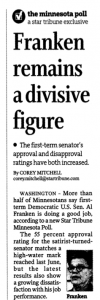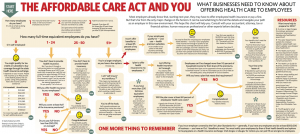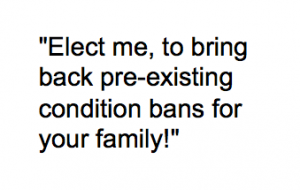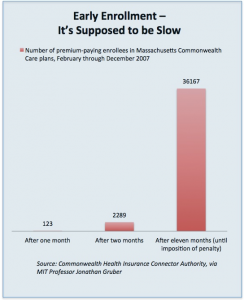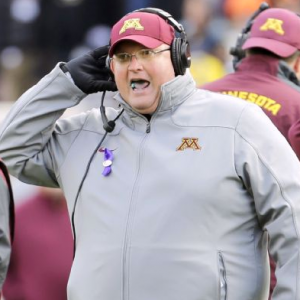 The Minnesota Department of Transportation (MnDOT) released a new 20-year plan in December 2013 – the Minnesota State Highway Investment Plan (MnSHIP). Spoiler alert: MnSHIP says we need more money to build more road capacity.
The Minnesota Department of Transportation (MnDOT) released a new 20-year plan in December 2013 – the Minnesota State Highway Investment Plan (MnSHIP). Spoiler alert: MnSHIP says we need more money to build more road capacity.
MnSHIP says much more than that, but adding road capacity is a central theme, as has been the case for many years with such long-range plans. At first blush, the call for increased road capacity seems like the most unassailable part of the plan. After all, Minnesota’s population is expected to increase over the next 20 years.
But the call for additional road capacity could ultimately turn out to be the most flawed part of the plan. Here’s why: One term you won’t see in MnSHIP is “driverless car.”
Are Driverless Cars Feasible?
When I was a lad, the science fiction cartoon The Jetsons offered the dream of flying personal vehicles, which, alas, have not materialized. That has made many of us skeptical about subsequent predictions about revolutionary transportation technology, such as Personal Rapid Transit (PRT) and driverless vehicles.
 But driverless cars are far less speculative that flying cars. Google, one of the wealthiest corporations on the planet, has been investing heavily in a driverless car. Their test vehicle has logged over half a million miles, and it has never had an accident while the computer was driving.
But driverless cars are far less speculative that flying cars. Google, one of the wealthiest corporations on the planet, has been investing heavily in a driverless car. Their test vehicle has logged over half a million miles, and it has never had an accident while the computer was driving.
Based on their tests to date, Google founder Sergey Brin predicts that Google will have autonomous cars available for the general public by 2017. Again, this isn’t some penniless, garage-based tinkerer expressing his utopian pipe dream. This is the founder of a company bringing in almost $15 billion in revenue per year. This is someone who has already produced a prototype that is successfully operating on the streets and has been legalized for use in California, Florida and Nevada.
Beyond Google, just about every major auto manufacturer is engaged in developing this technology. If Google doesn’t nail the driverless car assignment, one of their well-resourced and experienced competitors might.
 Ignoring driverless cars in a 20-year transportation plan beginning in 2013 plan may turn out to be akin to ignoring horseless carriages in a 20-year transportation plan written in 1903. Ford Motor Company was founded in 1903, and by 1923 Ford was flooding 2,000,000 Model T cars per year onto an overwhelmed infrastructure.
Ignoring driverless cars in a 20-year transportation plan beginning in 2013 plan may turn out to be akin to ignoring horseless carriages in a 20-year transportation plan written in 1903. Ford Motor Company was founded in 1903, and by 1923 Ford was flooding 2,000,000 Model T cars per year onto an overwhelmed infrastructure.
Consumer Buy-In?
But will consumers really surrender control of their vehicles to a computer? In 2017, the first year Google predicts that driverless cars will be available to consumers, we won’t see mass consumer buy-in. It will take time for the skeptical masses to observe the early adaptors. But within the 20-year sweep of the MnSHIP era, broader consumer buy-in is certainly a distinct possibility.
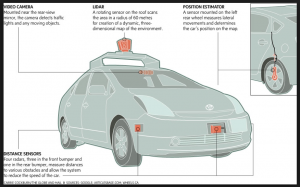 Safety Advantages. Driverless vehicles could offer consumers significant advantages. Any life insurance underwriter can tell you that driving is one of the most dangerous tasks any of us regularly undertake, and driverless vehicles offer the hope of vastly improved safety. Though human egos makes us skeptical of this truth, computer drivers have the capacity to be much more attentive, reliable and quick to react to danger than even the most skilled human drivers. In this way, the computers have the potential to keep us safer than human drivers can.
Safety Advantages. Driverless vehicles could offer consumers significant advantages. Any life insurance underwriter can tell you that driving is one of the most dangerous tasks any of us regularly undertake, and driverless vehicles offer the hope of vastly improved safety. Though human egos makes us skeptical of this truth, computer drivers have the capacity to be much more attentive, reliable and quick to react to danger than even the most skilled human drivers. In this way, the computers have the potential to keep us safer than human drivers can.
Time-Saving Advantages. Driverless cars also can offer us more of life’s most precious and limited commodity — time. Distance sensors and computers allow computer-driven vehicles to safely follow each other at much closer distances and higher speeds than human-driven cars, making for shorter, less congested and less stressful trips.
If driverless cars can supply Americans with more time, less stress, lower insurance rates, and less death and suffering, consumers will demand it. If policymakers further stimulate such consumer demand with incentives, such as tax breaks or dedicated lanes that offer faster and safer service, the revolution could happen even more quickly.
“Game Changer”
At first blush, the dawn of the driverless car era doesn’t seem to have implications for a transportation plan like MnSHIP. After all, we would still need roads for those driverless vehicles, right?
While we would still need roads in the era of driverless cars, we might need much less road capacity, and different kinds of road capacity.
Both because of fewer crashes and vehicles that can follow each other more closely at higher speeds, we might need much less road capacity to serve travel demand. How much less? Patcharinee Tientrakool of Columbia University estimates that autonomous vehicles could improve capacity by 43%. Driverless vehicles that can coordinate with other driverless vehicles would increase capacity by 273%.
Adeel Lari, a transportation expert and former MnDOT leader who is now at the University of Minnesota’s Humphrey School of Public Affairs, points out that in the 1960s traffic engineers were taught that highway capacity maxed out at around 2,000 vehicles per lane per hour. With improved traffic management methods and technology, Lari and his MnDOT colleagues later found they could briefly push capacity as high as 2,600 vehicles per lane per hour.
Temporarily moving from 2,000 to 2,600 vehicles per lane per hour was a huge improvement. But driverless cars could push capacity to a jaw-dropping 6,000 vehicles per lane per hour or higher, which Lari calls a “game changer.”
Transportation Planning Implications
For MnDOT, here’s how “the game” could rapidly change:
- Less Road Capacity? Minnesotans might need much less road capacity at a much lower taxpayer cost.
- Narrower Lanes? We also might be able to use narrower lanes, since driverless cars could reliably navigate tight spaces, and squeeze more vehicles through choke points in the process.
- Dedicated Lanes? In the interim period when both human drivers and computer drivers are sharing the roads, it might make sense to have dedicated lanes for driverless vehicles, to keep them safe from more erratic and less skilled human drivers.
- More sprawl? If driverless cars allow for shorter and less stressful trips, people may feel free to move further away from their jobs and other destinations. If they do, the increased sprawl would impact infrastructure needs.
- Gas Tax Alternative? Safer driverless vehicles might be able to be much lighter, and therefore be more fuel efficient. Additionally, less stop-and-go traffic would also save fuel. While these changes would be good for the environment and energy security, they also would mean less gas tax revenue available for maintaining and retrofitting the transportation infrastructure.
These are just a few of the kinds of issues transportation leaders should be analyzing. Land use planners have their own set of issues to analyze.
MnDOT, and its MnSHIP collaborators at the Met Council, are wise not to construct MnSHIP on an assumption that mass use of driverless vehicles is imminent. I’m not naive about all the variables that could delay or stop the successful development and deployment of this technology, or the public acceptance of it.
But in a 20-year plan, it is an oversight to ignore the potential implications of an issue as distinctly possible as driverless vehicles. MnSHIP should call on MnDOT and Met Council leaders to closely monitor and analyze the pace of driverless vehicle development, and consumer buy-in, so they could, if necessary, swiftly adjust their plans to fit a newly emerging reality. After all, the transition to driverless cars will be no time for vision-less planning.
– Loveland
Note: This post was also republished in MinnPost and streets.mn.
 Saint Paul, Minn. — A coalition of Minnesota law enforcement officials announced today that it will push to ban Minnesota patients from using a long list of dangerous prescription pain killers being sold on the streets by criminals.
Saint Paul, Minn. — A coalition of Minnesota law enforcement officials announced today that it will push to ban Minnesota patients from using a long list of dangerous prescription pain killers being sold on the streets by criminals. “It’s inhumane to deny a proven pain reliever to suffering patients, simply because abuse is possible,” said Mary Ann Wakefield, PEPM’s Executive Director. “Many of the most effective pain meds can be abused or sold on the black market, but that doesn’t mean that we should turn our backs on patients helped by those drugs.”
“It’s inhumane to deny a proven pain reliever to suffering patients, simply because abuse is possible,” said Mary Ann Wakefield, PEPM’s Executive Director. “Many of the most effective pain meds can be abused or sold on the black market, but that doesn’t mean that we should turn our backs on patients helped by those drugs.”




